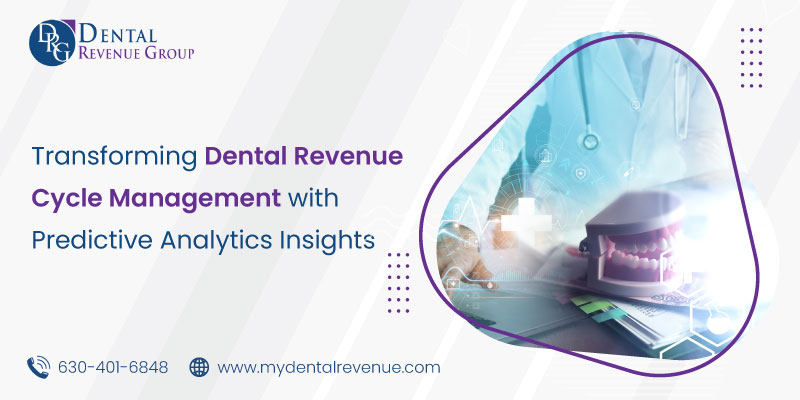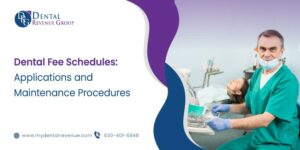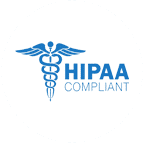In dentistry, managing the revenue cycle has been a struggle for practices. Between insurance claims, denied reimbursements, and tracking down unpaid bills, it can be a headache for dental practices to keep track of their financial health. Dental Revenue Cycle Management is a daunting task to navigate the ever-changing landscape of insurance regulations and patient payment processes. The integration of Predictive Analytics has emerged as a game-changer to address these challenges and elevate dental RCM to new heights.
What Is Dental Revenue Cycle Management?
Dental Revenue Cycle Management is the process of comprehensive management and optimization of the financial aspects within a dental practice. It encompasses critical components from scheduling appointments to managing revenue analysis. Efficient Dental RCM is vital for a dental practice’s financial health and success. It ensures a seamless flow of revenue, timely payments, and reduced risks of revenue loss, ultimately contributing to the practice’s stability and growth.
Improving Dental Revenue Cycle Management (RCM) through Advanced Analytics
In the dental industry, managing revenue cycles has become increasingly complex due to the rise in accounts receivable (A/R) and denials data, coupled with ever-changing payer reimbursement requirements. Forecasting reimbursements and implementing action plans for revenue cycle workflow improvements has become challenging for dental finance executives.
Advanced analytics has emerged as a critical tool for making data-driven decisions and proactive planning in the dental revenue cycle management space to address these challenges. Traditional analytic modules often provide RCM insights through standard reports, leading to an underwhelming experience for dental finance leaders. These conventional approaches cannot provide accurate predictions about the likely course of A/R and fail to offer actionable insights to collect outstanding reimbursements effectively, irrespective of aging.
Benefits Of Predictive Analysis for Dental Practices
Predictive analytics involves leveraging data and statistical algorithms to detect patterns and forecast potential future events. Dental practices can improve their financial outlook and provide better patient care by analyzing past data and trends. In today’s fast-paced world, the dental industry faces numerous challenges, including managing complex billing procedures, optimizing revenue streams, and maintaining efficient operations. One of the biggest benefits of predictive analytics for dental practices is identifying trends and patterns in insurance reimbursement and revenue. With advanced analytics software, practices can identify obstacles to timely payment and streamline their billing processes. By analyzing past insurance claims, practices can pinpoint which insurance carriers and procedures typically result in slow or denied reimbursement. This information can be used to optimize billing processes and improve the practice’s financial health.
Another advantage of predictive analytics is providing insight into patient behavior. Dental practices can tailor treatments and payment plans to individual patients by analyzing patient data. This leads to more satisfied patients and better financial outcomes for the practice. For example, a practice may discover that patients who have undergone a particular procedure are more likely to commit to a payment plan. With this information, the practice can customize payment plans and increase the likelihood of timely payment.
Finally, predictive analytics can help practices reduce costs associated with over-treatment. By analyzing clinical data, practices can identify which procedures are typically followed by additional treatments or referrals. This information can be used to prevent unnecessary treatments and reduce costs.
Applications of Predictive Analytics in Dental Revenue Cycle Management
These predictive analytics applications empower dental practices to make data-driven decisions, leading to better financial outcomes, enhanced patient experiences, and overall practice efficiency. Here are the following applications of data analytics for dental practices.
Streamlining Claims Processing
Predictive analytics can analyze historical data and patterns to optimize claims processing workflows. Identifying potential errors or missing information in claims before submission reduces claim denials and accelerates reimbursement timelines.
Predicting Patient Payment Behavior
With predictive analytics, dental practices can analyze patient payment patterns and predict the likelihood of timely payments. By identifying patients at risk of defaulting on payments, the practice can take proactive measures to improve collections and reduce accounts receivable.
Optimizing Appointment Scheduling and Resource Allocation
Predictive analytics can analyze patient appointment history and preferences to forecast demand and optimize scheduling. By understanding peak times and patient preferences, dental practices can efficiently allocate resources, reduce wait times, and enhance patient satisfaction.
Challenges and Limitations of Predictive Analytics in Dental Revenue Cycle Management
While predictive analytics offers numerous benefits for dental revenue cycle management (RCM), it is important to be aware of the challenges and limitations that may arise. Understanding these challenges can help dental practices implement and utilize predictive analytics in their RCM processes.
Data Quality and Accessibility
One significant challenge is ensuring the quality and accessibility of data. Predictive analytics relies on accurate and comprehensive data to generate reliable insights and predictions. Dental practices may face hurdles in collecting data from various sources, ensuring its integrity, and integrating it into a centralized system. Incomplete or inconsistent data can lead to inaccurate predictions and hinder the effectiveness of predictive analytics.
Resource Requirements
Implementing predictive analytics requires significant resources in terms of technology infrastructure and skilled personnel. Dental practices must invest in advanced analytics tools, data storage, and processing capabilities. They must hire or train professionals with the necessary data analysis and predictive modeling expertise. Additionally, ongoing maintenance and updates are essential to keep the predictive analytics system up-to-date and effective.
Complexity of Modeling
Creating precise and effective predictive models can be challenging for dental practices. Developing accurate algorithms that can analyze and interpret the vast amount of data unique to each practice’s RCM can be complex. The models must account for various factors such as insurance claims, reimbursements, patient behavior, and external factors impacting dental RCM. It may require collaboration with data scientists or experts to build robust predictive models that generate meaningful insights.
Adaptability and System Integration
Integrating predictive analytics seamlessly into existing RCM systems can be a significant hurdle. Dental practices may face compatibility issues when integrating predictive analytics with their current software or data management systems. Adapting the existing workflows and processes to incorporate predictive analytics may require significant changes and adjustments in operations, which could lead to disruptions or temporary setbacks.
Ethical Considerations and Privacy
Predictive analytics deals with large amounts of patient data, which raises ethical and privacy concerns. Dental practices must ensure patient data is securely stored, properly anonymized, and used strictly to improve RCM processes. It is crucial to adhere to data protection regulations like HIPAA and obtain patient consent whenever necessary.
Interpretation and Decision-Making
Even with accurate predictions and insights, the final decision-making process lies with the dental practice. Predictive analytics provides recommendations, but dental professionals must interpret and act upon the information. It requires a balance between relying on data-driven insights and leveraging professional judgment and experience to make effective decisions.
Predictive analytics has the potential to revolutionize dental revenue cycle management, but there are challenges and limitations to consider. Addressing these challenges can help dental practices unlock the full potential of predictive analytics and enhance their financial health and patient care.
Implementing Predictive Analytics in Dental Practice
Predictive analytics in a dental practice can offer valuable insights and improve revenue cycle management (RCM) processes. Here are steps to help dental practices successfully integrate predictive analytics into their operations:
Step 1: Define Goals and Objectives
Define your goals and objectives for implementing predictive analytics in dental RCM. Identify specific areas for improvement, such as reducing denied reimbursements, streamlining billing processes, or optimizing treatment planning. Having well-defined goals will guide your implementation strategy and help measure the effectiveness of predictive analytics.
Step 2: Gather and Prepare the Data
Ensure data is collected from relevant sources to support predictive analytics. This includes dental practice management systems, electronic health records, billing data, insurance claims, and patient demographics. Clean and organize the data, ensuring its accuracy, consistency, and relevancy. Address any data quality issues and consolidate data into a centralized platform for analysis.
Step 3: Choose the Right Tools
Invest in the appropriate tools and technologies to support predictive analytics. Consider software platforms or solutions that offer data analytics, machine learning algorithms, and predictive modeling capabilities specifically designed for dental RCM. Evaluate different options based on their features, scalability, ease of integration, and compatibility with your existing systems.
Step 4: Build Predictive Models
Leverage the expertise of data analysts or data scientists to build predictive models. These models must be tailored to address your dental practice’s specific challenges and goals. Identify key performance indicators (KPIs) and metrics to measure and track the success of your predictive analytics efforts. Carefully select the variables and factors to consider in your models, such as insurance claims history, reimbursement patterns, patient behavior, and treatment outcomes.
Step 5: Integrate into RCM Processes
Integration of predictive analytics into existing RCM processes is essential for seamless implementation. Work with your team to adapt workflows and procedures to incorporate the insights from predictive analytics. Ensure staff members receive adequate training and support to use the analytics tools and interpret the results effectively. Monitor the impact of predictive analytics on your RCM and make necessary adjustments as needed.
Step 6: Continuously Evaluate and Improve
Regularly evaluate the performance and outcomes of your predictive analytics implementation. Monitor KPIs, track key metrics, and assess how predictive analytics has improved RCM processes and financial performance. Continuously improve your predictive models, leveraging new data and insights from the implementation. Stay updated with advancements in predictive analytics technologies and methodologies to stay ahead of the curve.
Step 7: Maintain Data Privacy and Compliance
Ensure that data privacy and compliance regulations, such as HIPAA, are strictly followed throughout the implementation process. Obtain necessary consent and permissions before using patient data for predictive analytics purposes.
By following these steps, dental practices can effectively implement predictive analytics in their RCM processes. Practices can also enhance financial outcomes, improve patient care, and stay competitive in the ever-evolving dental industry.
The Bottom Line
Predictive analytics is a powerful tool for dental practices to improve their financial health and provide better patient care. By analyzing past data and identifying trends, practices can streamline billing processes, tailor treatments to patients, and reduce unnecessary procedures. In the competitive world of dentistry, adopting predictive analytics can be the key to staying ahead.











